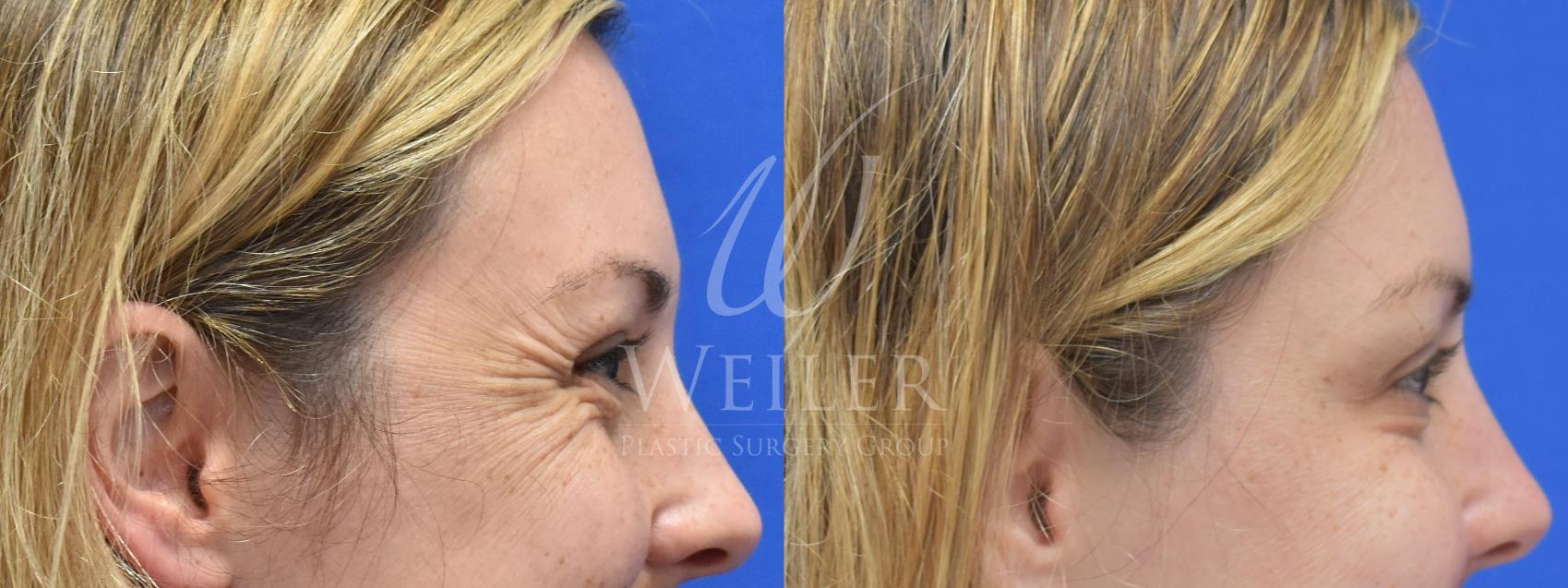How long does BOTOX take to work? What side effects will I have? What is recovery like? If you’re considering one of our most popular injectable treatments to turn back the clock, you probably have plenty of questions like these.
It’s perfectly natural to be curious about what to expect after treatment! Being informed ensures a more positive experience—and maybe even a smoother recovery. Below, we’re addressing what happens after BOTOX, including possible side effects and BOTOX aftercare basics.
BOTOX Aftercare Basics
You can make the most of your results by keeping these tips in mind after treatment:
- Follow your provider’s aftercare protocol
- Stay out of the sun as much as possible and apply sunscreen
- Avoid alcohol and blood thinners, which may increase the risk of bruising
- Stay hydrated to keep your skin healthy and supple
- Have patience until your wrinkle-free look fully emerges
BOTOX requires little to no downtime, so you can usually resume your regular daily activities immediately after your injections. Your injector will give you additional aftercare instructions at your appointment.
What Not To Do After BOTOX
Proper BOTOX aftercare can ease your recovery and enhance your results. With this in mind, we suggest the following guidelines after treatment:
- DON’T touch or massage the treated area
- DON’T lay down for at least 4 hours post-treatment
- DON’T hit the gym for at least 24 hours
Prematurely handling the treated area may cause neurotoxins to spread to unintended areas, and strenuous activities may increase the risk of bruising and swelling.
Common BOTOX Side Effects
While BOTOX is typically a well-tolerated treatment, some patients experience mild, temporary side effects, such as:
- Redness and swelling (usually subsides a few hours post-treatment)
- Bruising at the injection sites (gradually fades within a few days)
- Headache after BOTOX (usually resolves quickly)
Although uncommon, some patients experience droopy eyelids or “heavy eyebrows” after BOTOX if injections to the frontalis (forehead muscle) and surrounding areas aren’t properly administered. Fortunately, our skilled injectors are all highly educated nurses, nurse practitioners, or physician assistants, so you can trust that they know the precise dosage and placement to treat you safely and maintain your natural facial expressions.
Rare, serious BOTOX side effects may include allergic reactions, difficulty swallowing, or muscle weakness. You should contact your provider immediately if you experience these uncommon symptoms.
How Long Does BOTOX Take to Work?
Most patients notice initial improvement within 3 to 4 days, but achieving your ideal wrinkle-free look can take up to 2 weeks. Remember, it takes time for the neurotoxins to bind to nerve cell receptors before your targeted muscles fully relax. The same holds true for Dysport and most other BOTOX alternatives.
In contrast, dermal fillers such as JUVÉDERM® usually deliver more immediate results. Combining BOTOX with dermal fillers (aka a ‘liquid facelift’) helps many patients achieve optimal results.
How Often To Get BOTOX?
On average, BOTOX lasts 3 to 4 months. To maintain your youthful look, we recommend scheduling maintenance injections about every 4 months, but your injector will share specific recommendations based on your unique needs and goals.
Some “first-timers” may notice that their results are shorter-lived than the typical 3 to 4 months, but their results for subsequent treatments should last longer.
Schedule Your Consult
Do you have more questions about your BOTOX treatment and aftercare? We encourage you to request a consultation online or call Weiler Plastic Surgery at (225) 399-0001. Our team is always available to address your concerns and develop a treatment plan that’s customized to your unique needs and goals.



Leave a Reply